Can you really eat lamb medium rare or is it not safe for you? Let’s find out!
We’ve arrived at that time of year again. The holidays are creeping in, and you’re wondering what to make for the entire family.
All those food allergies and diets that everyone has—gluten, dairy, sugar, and so on—and you also want to impress your loved ones with something special, a dish that you normally don’t take the time and effort to prepare. So the thought occurs, let’s make some lamb! After all, we don’t usually cook lamb. But with the idea comes the challenge; you have absolutely no idea how to make it, not even deliciously, but safely as well.
So, keep reading, and you’ll have all the information you need on lamb safety in your kitchen, and you’ll be able to toss your worries out the window.
Lamb has a very rich and full flavor, but it can be very bad if cooked incorrectly. Lamb can be prepared in a variety of ways, but it is typically associated with Easter or Christmas.
Different cuts require different cooking and eating methods. Shoulder cuts, neck fillets, racks, saddles, loins, breasts, chump, shanks, legs, and mince are all available, each with its own cooking time and method. Rib chops are by far the most popular cut all over the world.
Can you eat lamb medium rare? Is it safe?
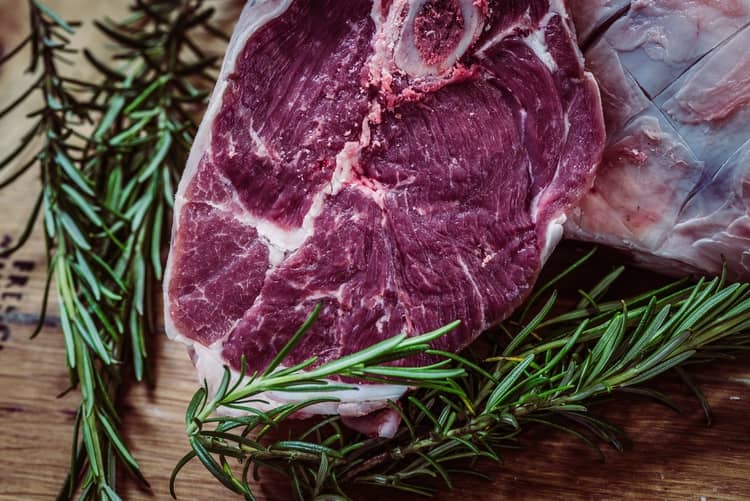
Whenever you cook meat, the only way to be sure of the internal temperature and safety of the slices, besides cooking them into oblivion, is to use a thermometer. You can buy them in every bigger supermarket these days and they will make your cooking process much easier and safer.
Medium rare is a very popular doneness for all kinds of meat. This level still has a similar texture to rare and still has plenty of natural juiciness, but it is visibly cooked, and the outside can be crispy and golden, which many people very much prefer on their meats.
Lamb is considered medium-rare at a 145°F internal temperature. When you prepare the medium-rare lamb, it will still be slightly pink and bloody, but the outside should be cooked.
Can you eat rare lamb?
Technically, rare lamb has an internal temperature of 140°F, which is the lowest temperature at which you can safely eat it, so never go below that.
Rare meat is usually the rawest state you can eat when cooking any meat. Generally, you can eat most of the meat that you can find in supermarkets rare.
There are some exceptions when it comes to lamb that you shouldn’t consume rare, like lamb burgers, lamb offal, minced or ground lamb meat, and lamb tartare.
Keep in mind that there are some circumstances when eating rare meat is avoidable at best, but mostly forbidden.
Pregnant women should never eat rare meat, as well as immune-compromised, sick, very old people, or children, under any circumstances. Keep these in mind when preparing your meals for the holidays.
Rare lamb will be heavily reddish and pink, and bloody as well, but the outside should be crisp and golden. This is usually achieved on a grill.
Can you eat medium lamb?
Medium is a common doneness choice for meats, including lamb. Most people find that this is the least amount of doneness that allows them to eat comfortably, and you can’t blame them.
Many people are unnerved by the sight of blood running from their slice, and it can cause a subconscious reaction to reject the food for safety reasons.
Medium lamb has an internal temperature of 160°F and is the most popular among home cooks because it goes well with any cut you find at the supermarket.
It’s still very slightly pinkish but definitely looks cooked and crisped. It also serves a great balance at the holiday table, because people who like their meat raw or well-done will usually be willing to eat it.
Does lamb have to be fully cooked?
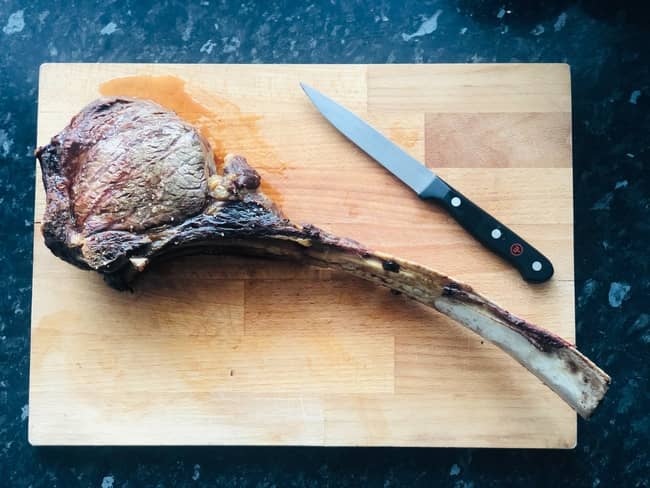
Any lamb seared on the outside and has reached a minimum internal temperature of 140°F is safe to eat. Above that point, it is up to personal preference to what degree of doneness you prefer in your slices.
Minced lamb, on the other hand, should never be eaten pink! Brown it thoroughly before serving, and do the same with lamb burgers.
The grinding process is responsible for the high levels of E-coli bacteria found in minced lamb.
Also, when purchasing lamb, keep in mind that the maximum time raw lamb can be kept at room temperature is one hour. Above that, dangerous bacteria spread like wildfire on them and are thus not always safe to eat.
Lamb that is raw or below 140°F will almost certainly give you food poisoning, so avoid it. But don’t be afraid to eat rare or medium-rare cuts of lamb that are still pink or a little bloody.
You can eat it safely if the temperatures are appropriate. Professional chefs recommend cooking lamb to medium-rare because it is best for flavor and spicing in most dishes and brings out the best of the meat.
Can you eat undercooked lamb?
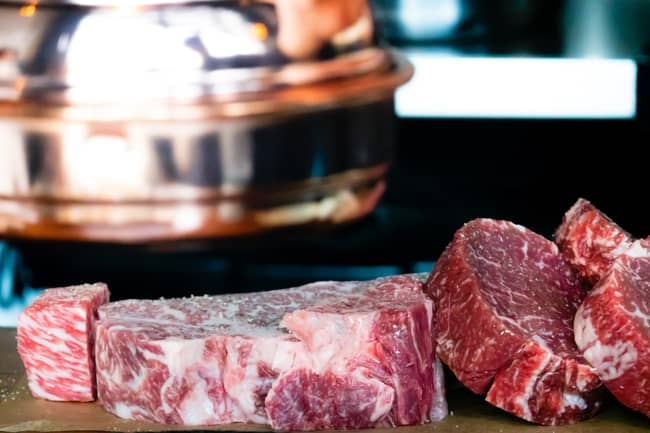
Technically, the term ‘undercooked’ can mean a variety of things to different people.
However, any lamb that has reached an internal temperature of 140°F is safe to eat. It is safe to eat rare meat that has reached a minimum safe internal temperature, is seared on the outside, and is pink and bloody on the inside.
Undercooked, as in raw, lamb is never safe to eat, as are most meats and fish, with very few exceptions. A rare lamb is also known as ‘blue’ lamb because the meat is slightly bluish on the outside but still rare when just crisped on the outside. That is also safe to consume. A healthy rare lamb should be juicy and tender to the touch.
Never, ever eat minced lamb or a lamb burger that is rare or even medium-rare. Minced meat should always be brown and thoroughly cooked to at least a medium temperature.
Can you eat lamb chops rare?
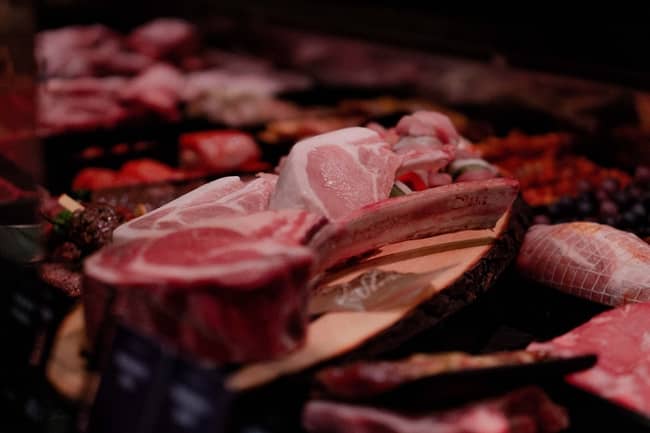
Rare lamb chops are perfectly safe to eat as long as they are cooked to a safe internal temperature of at least 140°F.
Rare lamb chops are juicy, tender, and delicious!
Crisp and brown them on the outside over high heat, and they will still be slightly reddish on the inside, which is the ideal consistency for rare lamb chops.
When cooking lamb chops, keep a close eye on them because they are easily overcooked and dried out. It’s far more difficult to keep them rare than it is to overcook them, so keep a close eye on cooking times and temperatures.
The danger and risks of eating rare lamb
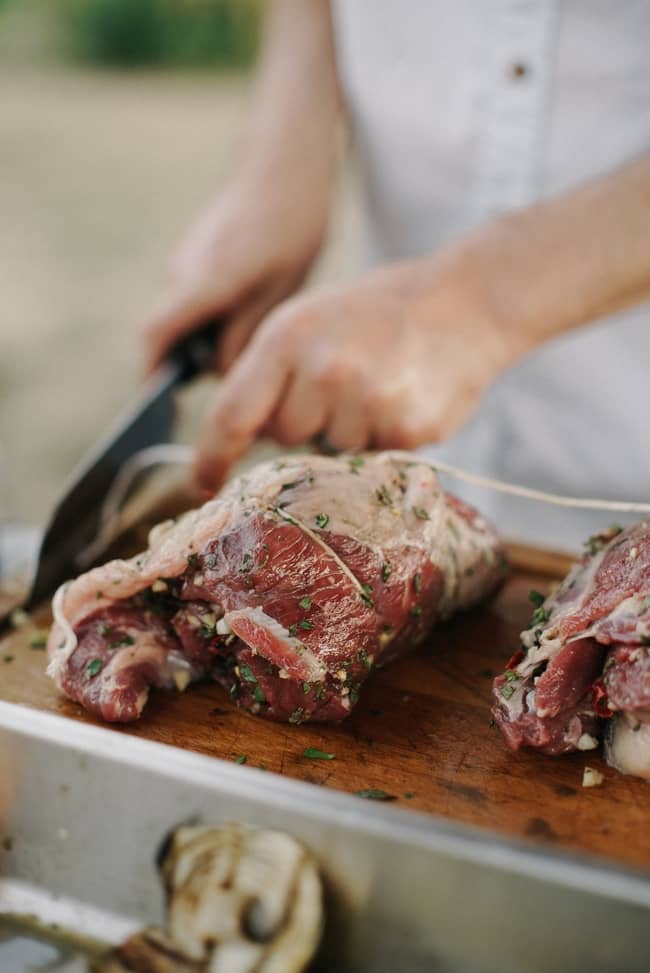
Lamb chops and steaks that are rare and pink are delicious but never mince.
Salmonella and E-coli poisoning are mainly caused by rare or medium-rare lamb mince, and it can be passed on to others. That is a recipe for catastrophe around the Christmas table.
Food poisoning symptoms, mild or severe, can develop hours after consuming the food and last for several days. E. coli and Salmonella are two common reasons for being wary of raw meat.
Both can land you in the hospital for a few weeks and are extremely harmful to pregnant women, children, the elderly, and individuals with impaired immune systems.
How to cook lamb safely? 5 tips!
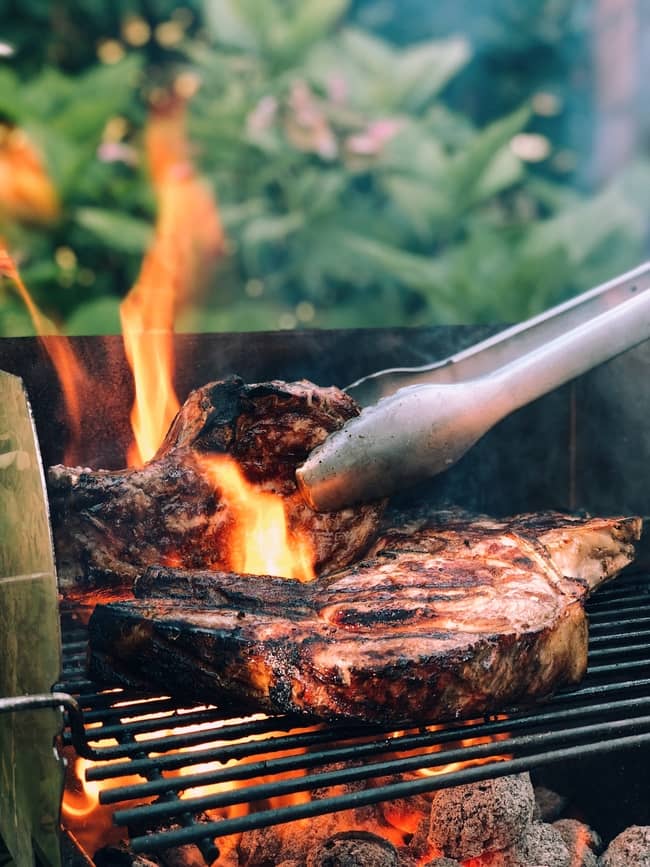
Although you have to be mindful of food safety, lamb can be served rare, medium, or well-done, depending on your preference. Luckily, most of the harmful bacteria are on the outside of the lamb, so searing golden on the outside is usually enough to be safe.
1) Be mindful of hygiene
Always wash your hands after touching or handling raw meat, no exceptions. Whatever you touch after that becomes infected, and bacteria spread quickly. Everything that comes into touch with raw meat should also be cleaned.
Although it is a must to wash your hands and utensils, raw meat should never be cleaned. When the water splashes, it is a certain way to spread bacteria around your kitchen.
2) Store separately
Try to keep meats separate from everything else in your fridge, preferably in a tightly shut container. Always use separate knives and cutting boards with raw meat, and wash them immediately and thoroughly.
Also, that should be a no-brainer, but don’t store meat at room temperatures and always refrigerate or freeze them.
Try not to keep any meat on the top shelf of your fridge because the juices can drip and contaminate other stuff. Keep them on the bottom shelf, in a separate container, ideally sealed shut.
3) Pay attention to cooking times and temperatures
Before getting down to prepare any meal, that you are unfamiliar with, make sure you know the safe temperatures that meat has to reach to be safe for consumption.
Never be impatient with cooking meat, it’s not worth the risk. Buy a meat thermometer and check the internal temperature when cooking.
4) Safe and sound thawing
Never thaw meat on the counter or at room temperatures at all.
Thawing should be a slow process, strictly happening in the fridge for food safety reasons. Any normal-sized meat can thaw overnight in your fridge.
And be careful of the thawing dripping juices of the raw meat, as it can easily spread bacteria in your fridge.
5) Check the raw ingredient
See, feel, and smell the meat before you delve in with all your heart into preparing the excellent slice of lamb you recently purchased. You should do this not only with lamb but with any meat you want to prepare, whether frozen or refrigerated. Thaw the meat if it has been frozen before checking it.
First, hold it in your hands and softly press it in many places with your fingertips. Is it pleasant to the touch? Except for the bone, it should be. It should not be stiffened, since this indicates dry, aged, and room-temperature-kept raw meat.
Then take a sniff. Raw meat isn’t as appetizing as a seared, grilled, and spiced-up meal, but it shouldn’t smell filthy or awful to you.
Finally, look at the color of the meat. Does it appear to be in good health? Is it tainted or browned? If the answer is yes, don’t take the risk.
Final words
Many people avoid eating lambs for ethical reasons. Unfortunately, the meat industry frequently treats animals inhumanely, which is reason enough not to support them, and it also harms the meat. Animals with chronic illnesses, pain, infection, or drugs taste subpar to a healthy animal who has been given a longer, fuller, and happier life.
If you must consume meat or prepare for the holidays and have meat-eaters in your family, seek out an ethical butcher and a local farmer. In terms of your conscience and the quality of the meat, it could be like night and day.
Although red meats, such as lamb, are known to trigger chronic illness when consumed extensively, they may be a good source of protein, vitamins, amino acids, and minerals in a healthy and balanced diet.
When cooking lamb, keep the cooking temperatures in mind. Stop cooking 7-10 degrees lower than the recommended internal temperature because it continues rising after being removed from heat for 5-10 degrees.
So, do you already know if is it safe to eat medium rare lamb and lab chops? Feel free to leave your comments below!
Interesting articles:
- How Many Tablespoons In 1/3 Cup Butter? (Conversion Table)
- Can You Eat Raw Green Beans? Are They Toxic? 5 Risks
- Can You Eat Raw Potatoes or Is It Bad For You?
- Does Kraft Mac and Cheese Expire? 9 Signs That It’s Expired
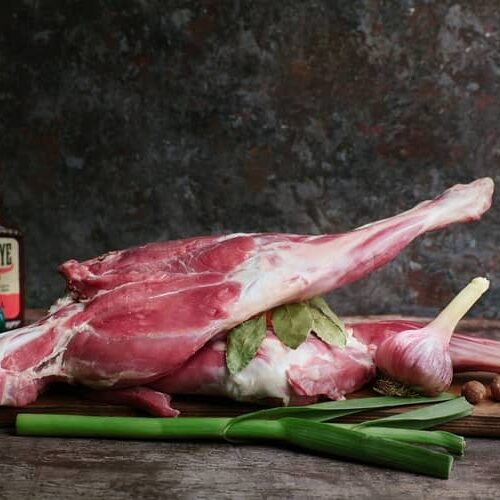
Can You Eat Lamb Medium Rare? Is it Safe?
Ingredients
- Lamb
- Lamb chops
Instructions
- Cook the lamb and check the internal temperature;
- Technically, rare lamb has an internal temperature of 140°F, which is the lowest temperature at which you can safely eat it, so never go below that;
- When the lamb reach the 140ºF, is it safe to eat!


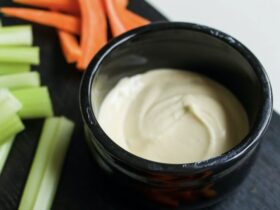
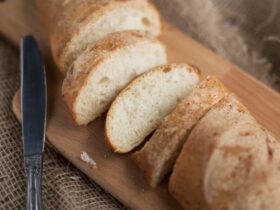
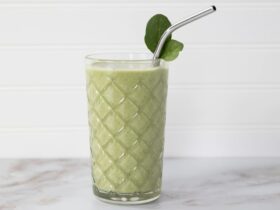
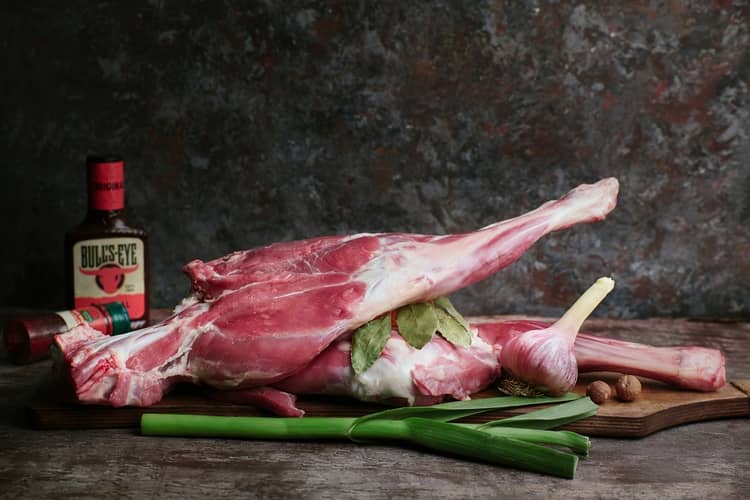
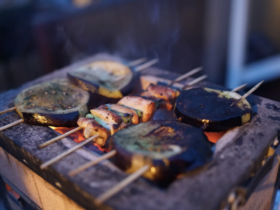
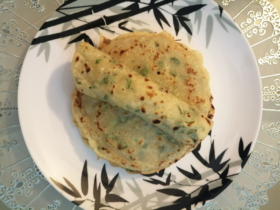
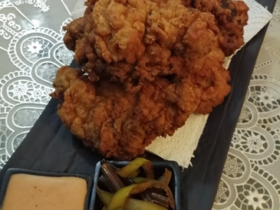
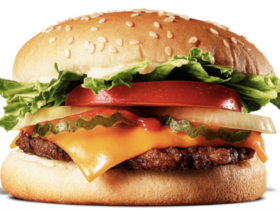
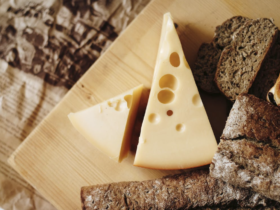
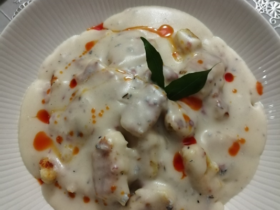
Leave a Reply